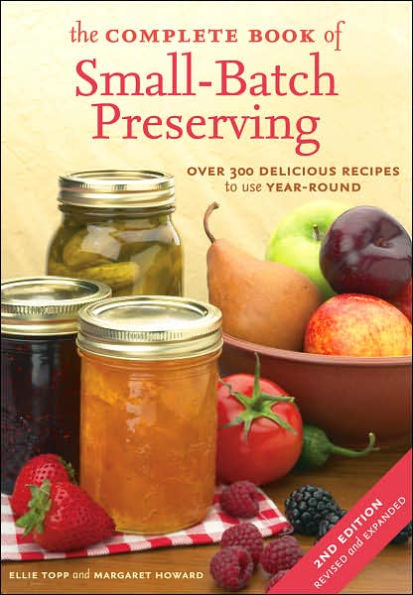Multi-hued peppers, juicy peaches and nectarines, glowing red and purple grapes — all these delicious fruits beckon to us at the farmer's market or produce counter. We load our shopping baskets with this bounty from all over the world. And then what? We certainly enjoy eating the fresh produce. But deep within most of us lurks a desire to preserve these flavors for future enjoyment.
Many of us remember our grandmothers spending long hours in the summer preserving the produce from their large gardens. While few of us have a desire to return to the era of preserving large quantities of food for the cold months, we are developing a taste for new flavors and want to use them to enhance an otherwise simple meal. A flavorful bit of chutney, a rich salsa, a crisp pickle, a special sauce, or a flavored oil or vinegar adds interest to a meal while fitting a healthy lifestyle. Jams, conserves, marmalades and jellies can be spread on toast, English muffins or tea biscuits with no added butter necessary.
Throughout this book we offer recipes for smaller rather than larger finished amounts. A small yield gives more opportunity to make several different preserves. It also reduces the risk of scorching that is always a danger when cooking larger batches. And it makes large storage areas unnecessary. Most recipes can be made year round and, most important, at your convenience.
Preserving food is great fun and not at all difficult. When you decide to preserve food, there are two important things you must do. The first is to destroy all micro-organisms such as bacteria, molds and yeasts naturally present in food to prevent them from spoiling the preserved product. Having done this, the second thing is to make sure your preserving containers are sealed in such a way that other organisms cannot enter, otherwise they will cause your carefully prepared food to spoil.
Micro-organisms and enzymes naturally present in foods cause many changes to occur. Not all of these changes are bad. Many micro-organisms — bacteria, molds and yeasts — are intentionally used to create new forms of foods. For instance, bacteria added to milk produce creamy yogurt. Enzymes turn milk into curds, and molds introduced into the curds create wonderful cheeses. Winemakers know the result of yeasts growing in grape juice. However, not all organisms cause changes that are desirable. They can cause food to spoil.
Today's methods of preserving are much easier, thanks to innovations from jar manufacturers. The two-piece closures, are much more foolproof than were the glass-topped sealer jars used in bygone days. And modern jars come in a variety of convenient sizes that let us preserve small amounts quickly without overwhelming our storage areas. The small batches featured in our book let you make a small amount of a tasty preserve in very short order.
We now have access to a wide variety of fruits and vegetables — some of which were unknown to North America until recently. Many of these fruits and vegetables, such as mangoes, papayas, fresh figs and even strawberries and a variety of peppers are now available year round. Almost all of our recipes can be made throughout the year with this greater availability. However, a few foods are only available for short times of the year. Seville oranges are a good example. They are usually in stores only in January and February. Other fruits and vegetables, although available throughout the year, may be of better quality at certain times. We believe the quality of our own locally grown produce is superior since it arrives fresh in our kitchens without extended storage. At other times, good imported produce is available — just remember, you may be paying more. Preserve when the quality is finest and price is lowest.







